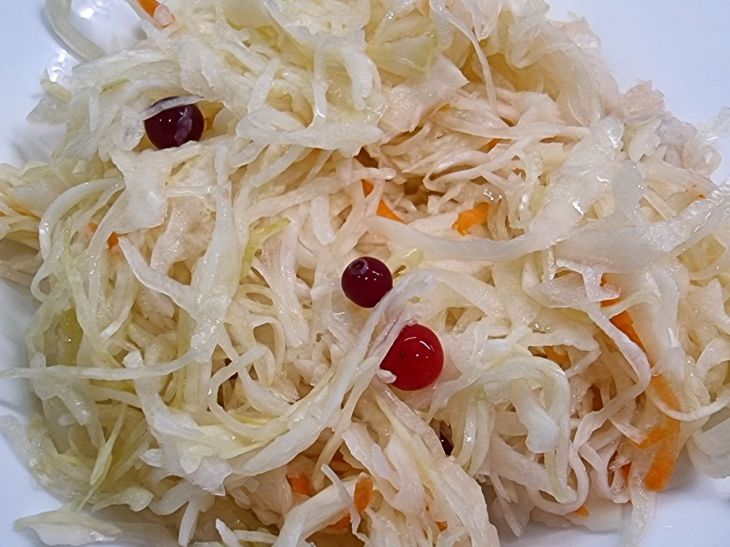Sauerkraut is considered an irreplaceable source of vitamins and minerals. But it contains something more valuable - probiotics (a source of lactobacilli) and prebiotics (food for beneficial bacteria in our body).
This product is good as a salad, and is an excellent side dish for meat, fish and eggs, as it helps to digest protein foods.
It's not difficult to ferment cabbage, but sometimes it turns out soft. And you really want to eat delicious crispy cabbage!
Mistake number one: pressing too hard
After cutting, the cabbage needs to be rubbed with salt to release its juice. The same mistake is made here: an inexperienced cook is too zealous, turning the cabbage "into mush".
The thing is that the juice should appear after some time, and not immediately in large quantities. Your task is only to slightly press the cabbage so that it becomes more elastic and pliable. When you begin to lay it out in a container and tamp it tightly, the juice will appear.

Important: there are varieties of cabbage that have very little juice; in this case, you will have to add water.
Mistake two: high temperature
The higher the temperature, the more active the lactic acid bacteria are. At temperatures above 28 degrees, their metabolism and reproduction reach record intensity. If you keep the container at this temperature for several days, the cabbage may become soft. It will also quickly turn sour.
Mistake number three: "wrong" cabbage
There are different varieties of cabbage. Some of them are intended for salads and soups (usually early varieties). When fermented, they often become soft.
You should choose varieties for pickling. If you have your own garden, look at the information on the seed packaging or on the manufacturer's website.
Important: late varieties must be left to sit for 2–3 months to become suitable for fermentation.
Mistake number four: too cold
At low temperatures, the activity of lactic acid bacteria slows down. But mold fungi and putrefactive microorganisms happily occupy the unoccupied territory. As a result, the cabbage becomes soft, gray, and has an unpleasant smell.
Important! If the cabbage is soft, but has the characteristic smell and color of a fermented product, then it can be eaten. But if the smell and color are not characteristic of fermented cabbage, it should be thrown away.
Grandma's secret for the last time
Most modern people brush off the lunar cycles, considering them a relic of the dark past and the fantasies of uneducated grandmothers. But grandmothers always got cabbage right. Perhaps because they relied not on education, but on observing the cause-and-effect relationship. And this relationship showed that cabbage fermented on the waning moon often turns out soft and tasteless, while cabbage fermented on the waxing moon is always tasty and crispy.








